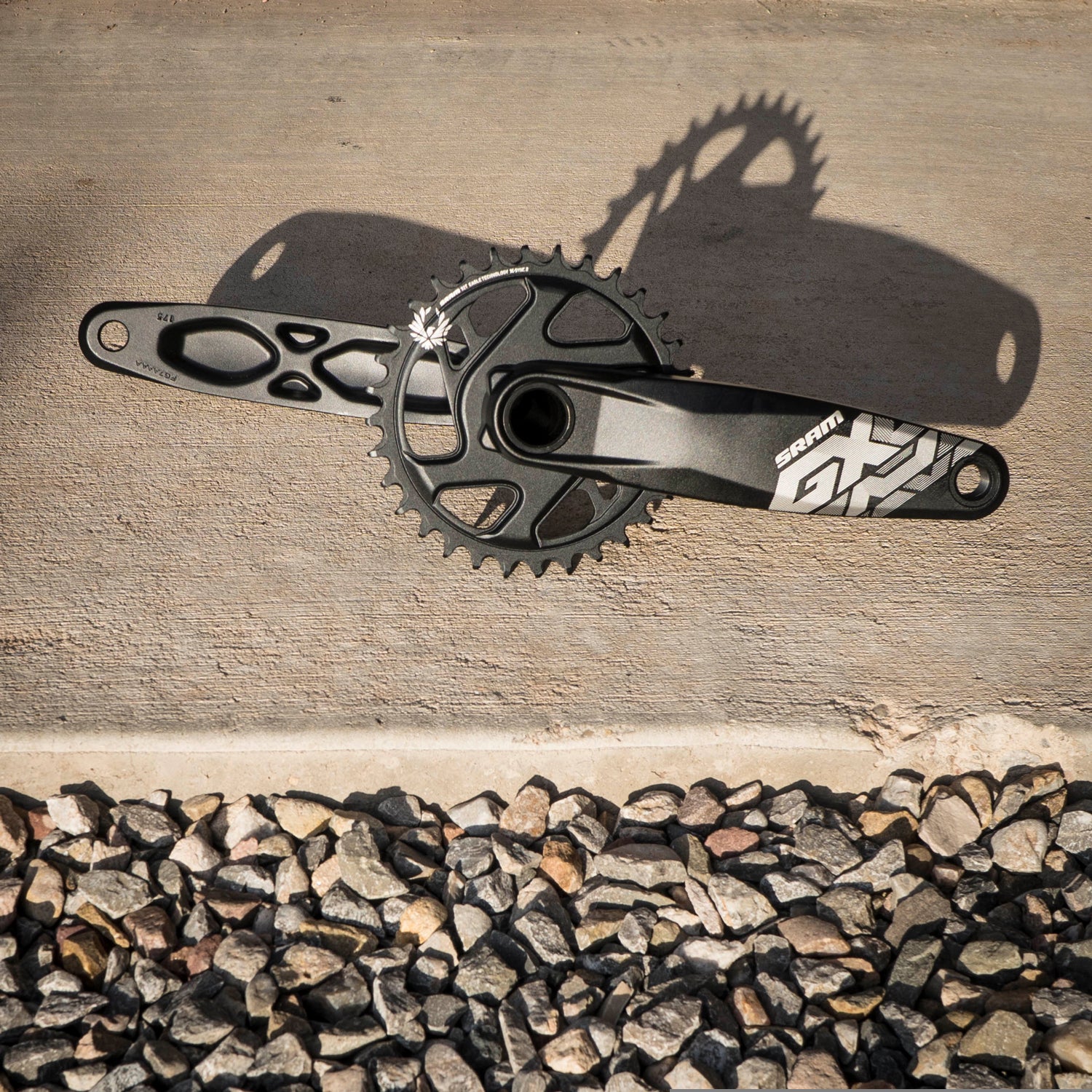There’s a lot of grousing out there over the high price of bikes and bike parts. But in June, SRAM announced its GX Eagle MTB group, which brings the pinnacle of mountain bike drivetrain performance to the masses at 65 percent less than the cost of the top-shelf XX1 Eagle.
I’ve been testing the new components against their more-expensive counterparts, and though is technically third tier, the performance is so good—even considering weight—that I’d bet the average rider could not tell the difference between it, the second-tier XO1 Eagle, or the top-shelf XX1 Eagle. There’s a place and market for each, naturally, but if you’re on a budget, there’s no need to feel like you’re slumming it anymore.
As I’ve argued before, SRAM effectively killed the mountain bike front derailleur by building a system out back with a 12-gear range so large that it nearly equaled what’s possible with two chainrings. That was great if you wanted to spend nearly the price of a full bike for just a component set, but the other 99 percent were relegated to well-designed, smaller 1×11 setups. Now, however, GX Eagle offers the same 12-gear range as the top shelf, with a 50-tooth granny, and it costs $495 for a full drivetrain versus $1,411 for the premium XX1 Eagle.
To be clear, GX Eagle is not 100 percent equal to XX1 or even X01 Eagle. Manufacturing and materials step down through the range. Whereas XX1 gets a carbon derailleur and XO1 is built of steel, GX goes to a slightly less burly aluminum. And while the coup de grace of XX1 Eagle is a cassette that’s intricately stamped from a single piece of steel (and held onto the hub by an aluminum, 50-tooth ring), the GX Eagle cassette is built from stamped-steel cogs (plus that alloy 50-tooth ring) held together by stainless pins. Sure, it’s heavier by about half a pound, or 20 percent, but you still get the same cassette steps and range.
Shifting on GX Eagle is virtually identical to its two higher siblings, though perhaps nominally slower. And when I say nominally, I don’t mean the difference between power windows and crank windows on your car. I mean the disparity between fabric seats and leather. It’s quick and accurate, and unless you were riding the group back-to-back with XO1 or XX1 Eagle, you would never know the difference. In fact, I think few would be able to discern the contrast in head-to-head tests.
It’s not just SRAM and GX Eagle that are providing this value. As technology continues to trickle down, the performance of bike components is higher across the ranges. Weight and, to a lesser degree, dependability over time are the biggest distinguishing traits between the top three or four group sets between brands these days, which means that no matter your brand preference, it’s possible to buy near top-level execution on a mid- or even budget-level bike if you’re a savvy consumer.
For instance, I’ve been testing three mountain bikes equipped with Shimano’s three component groups: XTR on a , XT on a Rocky Mountain Element, and SLX on the new . While all the components have worked almost flawlessly, what has impressed me most is the quality and feel of the new . Like SRAM’s new GX Eagle, the third tier shifts and brakes virtually as well as the top end. The performance is especially impressive if you compare costs of identical 1×11 setups: XTR weighs 2,596 grams and sells for $1954.88, XT weighs 3,003 grams and costs $879.88, and SLX weighs 3,151 grams and costs $588.88. There’s just over a pound difference from top end to third tier, while SLX sells for 70 percent less.
The juxtaposition of Shimano’s two electric MTB groups is even more stark. Yes, a complete XTR Di2 1×11 setup weighs 339 grams less than XT Di2, but it costs almost double ($2,908.82 versus $1,573.82), while performance is virtually the same. If you parse that out, it costs $112 per ounce to upgrade to XTR Di2.
It’s easy to get lost in the numbers, but the big picture is that, at least where components are concerned, performance and value are on the rise. I’ve long counseled friends and colleagues that the smart money buys bikes with second-tier setups—either SRAM XO1 or Shimano XT in the case of mountain bikes. But with the arrival of GX Eagle and SLX, that logic extends down the line. (And with road components— versus Dura Ace, for instance—it offers the same value proposition.)
If budget is no issue or you need the highest performance available, the top-of-the-line parts and bikes are impossible to argue against. But if you can’t afford or justify the bling, you no longer need to view lower-tier components as a comedown.


